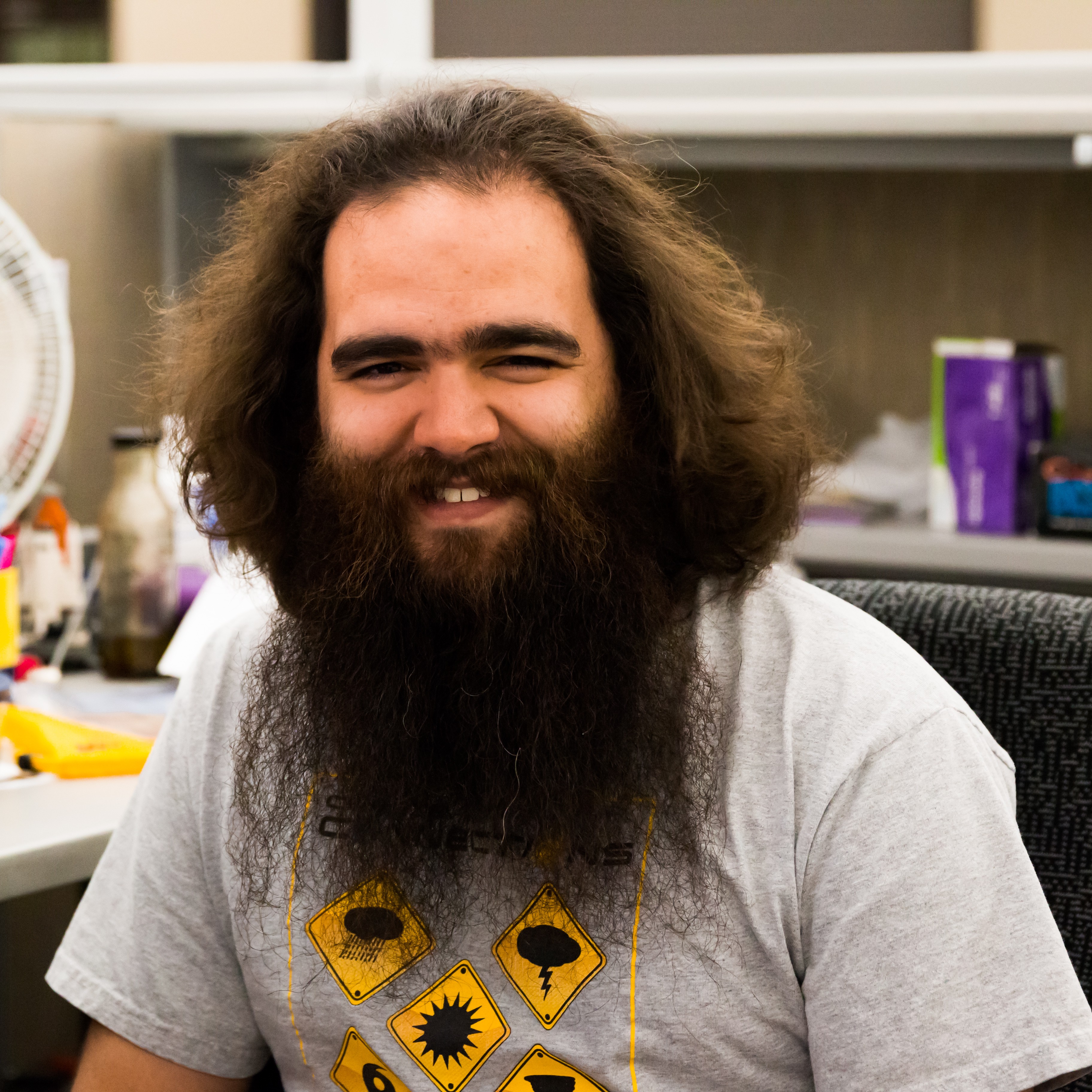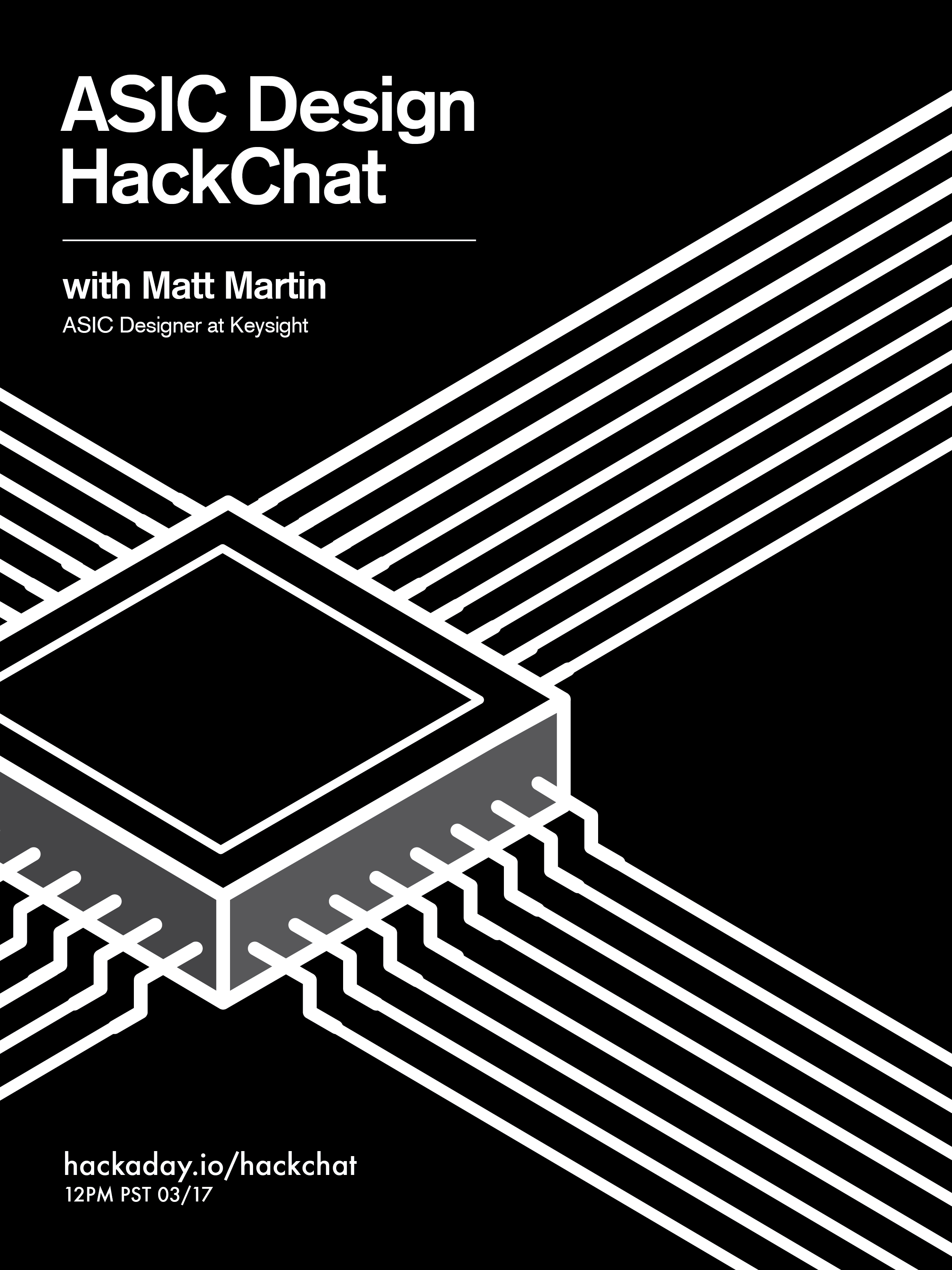Join the ASIC Design chat by clicking on the JOIN HACK CHAT button. Then, request to join #Hack Chat. Don't request to join from this page, click the JOIN HACK CHAT button.
Come and talk with @matthew_martin, ASIC designer at Keysight.

Matt graduated from CU Boulder in 2006, with a M.S. in Electrical Engineering, B.S. in Electrical and Computer Engineering, and a B.S. in Applied Math.
He started working at Agilent (now Keysight) in 2007 as a physical designer for digital ASICs. Physical design is sometimes referred to as backend work; Matt starts after the code that describes the functionality of the chip has been synthesized into logic gates, and takes it all the way to a design that can be fabricated in silicon. He has designed ASICs in process nodes from 0.13um to 28nm, with a variety of applications from control blocks for primarily analog signal conditioning chips to large digital data processors.
In his spare time, he enjoys working on scales visible to the naked eye, like home renovation and board games.
We're meeting over at the #Hack Chat on March 17th, noon PDT.
The list for discussion and questions is here.



Yes you can apply windowing to enable full scale resolution by altering DC shift and gain, as can done on analogue scopes. Also if there is a lot of noise then its pointless having more resolution. But when you compare digital with analogue scopes the only parameter is one shot bandwidth and averaging in digital scopes is OK for repeditive waveforms. I would think the ccd memory and slow speed A to D would be a good way of obtaining increased resolution. I believe RIGOL use interleaved A to D in one of their scopes. I will stick to my TEK7904.